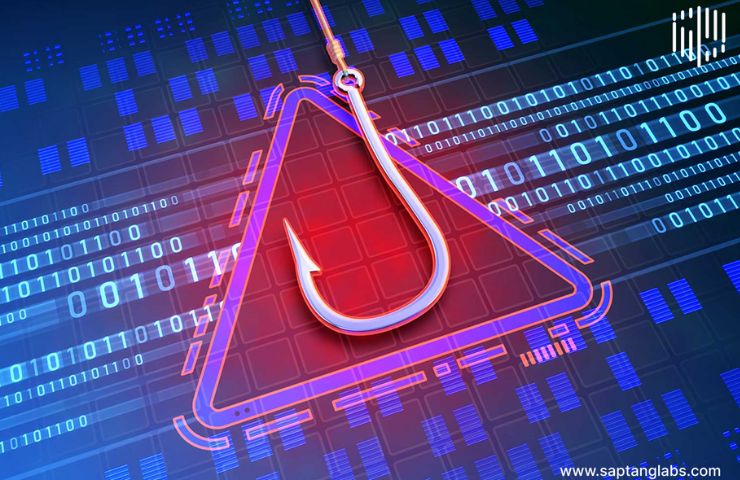Phishing attacks have always been a significant cybersecurity concern, but in 2025, these scams have become more advanced than ever. With artificial intelligence (AI) enhancing phishing techniques, cybercriminals can now execute attacks that are more convincing, widespread, and harder to detect. AI-powered scams, deepfake videos, fake websites, and social media fraud are now more sophisticated, making phishing attacks a growing threat to individuals and businesses alike.
Statistics indicate a 140% rise in browser-based phishing threats and a 130% increase in zero-hour phishing attempts. These figures highlight the rapid evolution of cybercriminal tactics, making it crucial to understand how phishing attacks work and how to stay protected.
The Role of AI in Phishing Attacks
AI-generated phishing emails have changed the landscape of cyber scams. Unlike traditional phishing emails, which often contained typos and formatting issues, AI now enables scammers to create flawless emails that mimic legitimate corporate or financial communications. Attackers use AI-driven data scraping to personalize phishing emails, making them appear highly relevant to their targets. Additionally, chatbots and AI-assisted automation allow fraudsters to send these emails in bulk, increasing their reach and success rate.
Another major concern is the rise of AI-generated phishing websites. These fraudulent sites closely replicate banking portals, corporate login pages, and social media platforms, making it increasingly difficult for users to distinguish between real and fake websites. AI automates the design of these phishing sites to ensure near-perfect replicas of legitimate sites, tricking users into entering sensitive information. Some phishing websites now feature AI-powered chatbots that interact with victims, making scams even more deceptive.
The Rise of Phishing-as-a-Service (PhaaS)
Phishing attacks were once limited to skilled hackers, but AI has made cybercrime more accessible. The emergence of Phishing-as-a-Service (PhaaS) allows even individuals with no technical expertise to launch phishing attacks. Cybercriminals can purchase pre-made phishing kits that include AI-driven automation, making it easier to execute scams. Some phishing services offer customizable scam templates that help attackers tailor their approach to specific targets. With AI helping cybercriminals bypass traditional security filters, phishing attacks are becoming more challenging to detect and prevent.
New AI-Driven Phishing Tactics
AI is also being used to exploit zero-day vulnerabilities. Cybercriminals deploy AI-powered scanners to identify weaknesses in websites and software before security patches can be applied. Additionally, AI-driven tools automate password cracking and credential theft, making phishing attacks more effective. Since AI can quickly adapt to new security updates, traditional protection methods often fail to stop these scams in time.
Deepfake technology has further enhanced phishing attacks. AI-generated videos and voice recordings enable scammers to impersonate CEOs, government officials, or even family members. These deepfake scams make it easier for attackers to manipulate victims into sharing sensitive data. AI-generated voices can bypass authentication systems, making phone-based phishing (vishing) a growing threat. Real-time deepfake technology even allows scammers to engage in fake video calls, making phishing attacks more convincing than ever before.
Social media has become another hotspot for AI-powered phishing scams. AI-driven bots now impersonate influencers, brands, and customer support teams to gain victims’ trust. Fake AI-generated messages offering job opportunities, prizes, or financial aid are frequently used to lure people into scams. Additionally, AI-powered chatbots initiate conversations with victims, gradually extracting sensitive information through seemingly harmless interactions.
How Phishing Attacks Are Affecting Businesses and Individuals
Businesses face an increasing number of phishing attacks, particularly with the rise of remote work. AI-driven spear phishing tactics target high-level executives, leading to financial fraud, data breaches, and reputational damage. To combat these threats, companies must invest in AI-powered security solutions that can detect and prevent phishing attempts before they cause harm.
For individuals, the risks of phishing attacks are higher than ever. Mobile phishing scams are on the rise, especially through SMS-based phishing links. AI-powered fake customer support chats trick users into sharing personal and financial information. Many AI-generated scams bypass traditional spam filters, making it more difficult for users to identify fraudulent messages. The increasing sophistication of phishing attacks means that anyone can become a target.
How to Stay Protected Against AI-Powered Phishing Attacks
One of the most effective ways to safeguard against phishing attacks is by enabling multi-factor authentication (MFA). Even if attackers obtain login credentials, MFA adds an additional verification step, significantly reducing the risk of unauthorized access. Using authentication apps instead of SMS-based MFA can provide even stronger protection.
Investing in AI-powered cybersecurity tools is another crucial step in defending against phishing attacks. AI-based email filters can detect suspicious patterns and phishing indicators, preventing fraudulent emails from reaching inboxes. Advanced behavioral analysis tools can recognize unauthorized access attempts, helping businesses and individuals stay one step ahead of cybercriminals.
Awareness and education are essential in preventing phishing attacks. Learning to recognize phishing red flags, such as suspicious email addresses, urgent requests, and fake links, can help individuals avoid falling victim to scams. It’s important to verify unexpected messages and never click on links without confirming their legitimacy. Staying updated on new phishing tactics and scams is also key to staying protected.
Conclusion
AI is drastically reshaping the landscape of phishing attacks, making scams more deceptive, scalable, and effective. The surge in AI-driven phishing scams highlights the urgent need for stronger cybersecurity measures. As cybercriminals continue to evolve, individuals and businesses must take proactive steps to stay secure. By leveraging AI-powered security tools, enabling multi-factor authentication, and staying vigilant, it is possible to minimize the risks associated with phishing attacks. The fight against cybercrime is ongoing, and awareness is the first step in staying protected.


